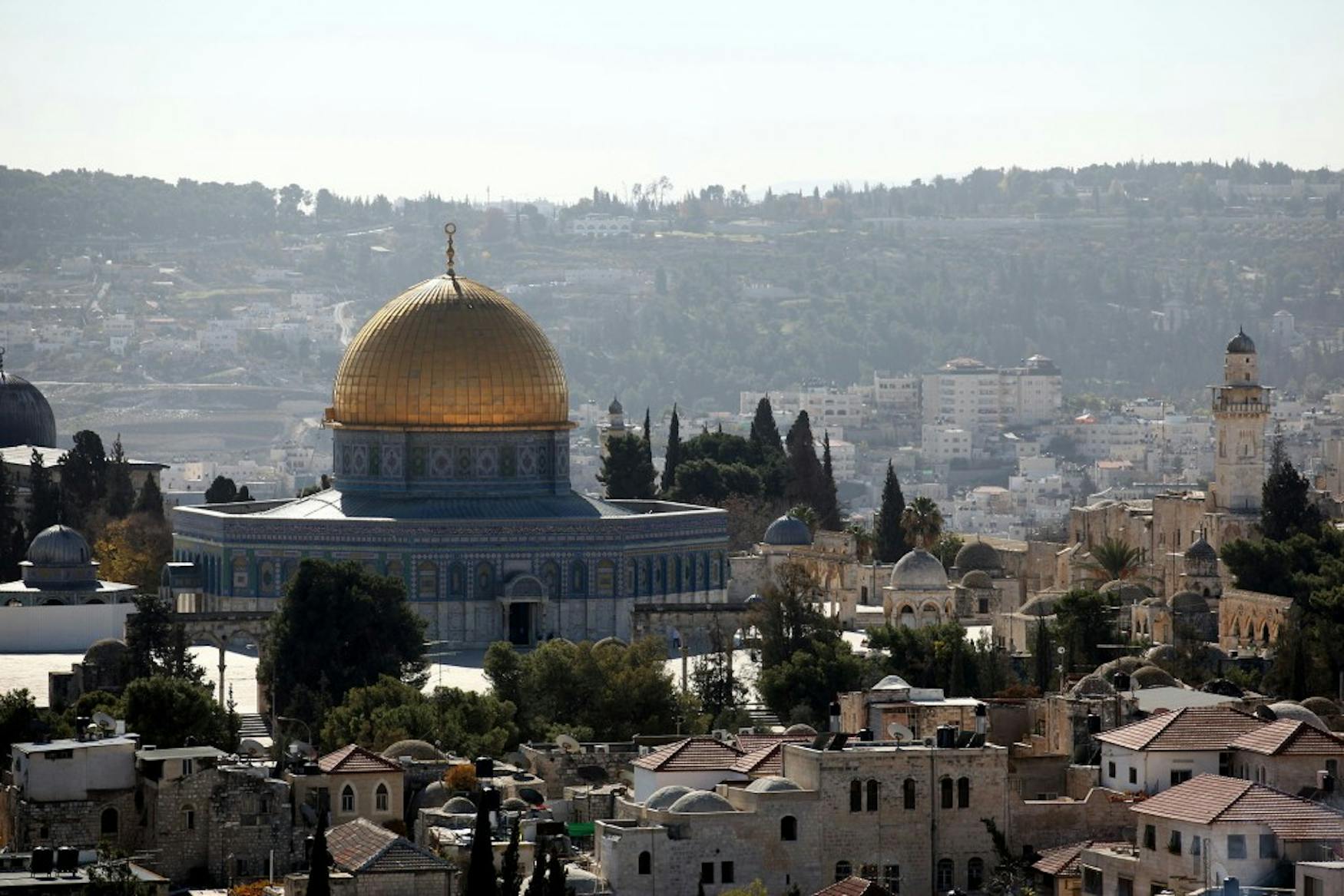Age-old dome informs modern conflict
Regarded as "Jerusalem’s oldest landmark," the Dome of the Rock, built in the 7th century, carries deep religious significance for Muslims, Jews and Christians. The golden Dome, which can be identified from almost any location in Jerusalem, earns its spiritual status by being built upon what is referred to as the Foundation Stone — the holiest location in Jerusalem.
This complex birthplace of three Abrahamic religions inspired Prof. Kanan Makiya (IMES) to write "The Rock: A Tale of Seventh Century Jerusalem in 2000."
His work of historical fiction tells the story of the building of the Dome of the Rock. It also examines Jewish-Muslim relations leading up to it.
Makiya’s book helped inspire the recent documentary, "One Rock, Three Religions" directed by Isaac Hertz and produced by Valentina Castellani Quinn. The film focuses on the Dome of the Rock as Jerusalem’s holiest site and explores what it means to people around the world, in light of the ongoing Israeli-Palestinian conflict. Makiya was featured in the film and sat on the discussion panel on Thursday, Sept. 3, after the screening of the documentary at an on-campus event to offer his insight on the widely-disputed religious site.
In an interview with the Justice, Makiya explained the meaning of his book and how the issue became important to him.
"In a funny kind of way it’s like you see the Middle East in reverse, so to speak, if you look back at that first century. Obviously my intention was to make a comment on the stalemate of the current sad state of affairs, the complete lack of trust and understanding that exists in the Palestinian-Israeli arena," Makiya said.
Prof. Makiya was born in Baghdad and left Iraq to study architecture at the Massachusetts Institute of Technology. He began teaching at Brandeis in 1994 as a guest professor and is currently the Sylvia K. Hassenfeld Professor of Islamic and Middle Eastern Studies and is also a fellow at the Crown Center.
He has written several works before "The Rock", including "Republic of Fear: The Politics of Modern Iraq" (1989), "The Monument" (1991) and "Cruelty and Silence: War, Tyranny, Uprising and the Arab World" (1993). His works, "Republic of Fear" and "The Monument" were written under the pseudonym Samir al-Khalil.
"The Rock" is a work of historical fiction but is heavily rooted in sources and Makiya’s research. Makiya marks the work as imaginative, in that the architect of the Dome of the Rock is unknown. Therefore, he creates characters in the book to tell the creation of the Dome of the Rock through historical research.
"It’s a story I’ve assembled from pieces of Christian-Jewish and Christian tradition, that is, I used them sort of like a mosaic, to stitch together a tale really about building The Dome, The Rock and above all about the meaning of the Rock and its meaning in relation to Jerusalem," Makiya said, citing the Dome itself as the "greatest source of evidence."
He notes the Dome of the Rock as the most continuously used building in history. Inside the Dome there are inscriptions from the Quran that are considered the oldest scriptures of the Quran in existence. However, it is not a Mosque and was not intended to be a Mosque. He explained that Muslims in the first century considered the Rock to be the prayer place of David, and, according to Muslim sources, the first direction they faced for prayer in their religion was in the direction of what they thought to be the prayer place of David.
The book goes on to explore this piece of Muslim religion in relation to a Jewish alliance and overarching Christian presence.
Interestingly, Makiya has striven to overcome the controversy surrounding this site. He claims that the meaning of the book and the Dome of the Rock is that Jerusalem, amongst all holy cities, is special.
"Jerusalem stands apart in that — in this rock and in this site — they are unto themselves, the notion of sharing them between peoples seems to me is a false one. Jerusalem has had more than 11 complete changes of religion; ... the site suggests to me that it needs to belong, it cannot be shared, that you cannot divide a rock- it makes no sense to divide a rock … the rock is the building that celebrates, and it is something that belongs to the entire human species. We need to construct an idea of Jerusalem that allows it to stand above all other cities in the world — the special status of the Dome, belonging to no one person, but belonging to everyone.
How you do that exactly, how the United Nations should go about doing that, how you would circumscribe that legally, I don’t know. But ... it seems to me what the meaning of that rock is," Makiya said.
In response to the film screening on Thursday, Makiya hopes that the importance of the Dome of the Rock will resonate with the Brandeis community.
"I think that the film is making a case for little steps towards progress and improvement of relations.
The state of human relations between Arabs and Israelis, between Muslims and Jews, is so, so exceptionally bad today that anything that contributes towards an understanding of the other has got to be a good thing," Makiya said.



Please note All comments are eligible for publication in The Justice.